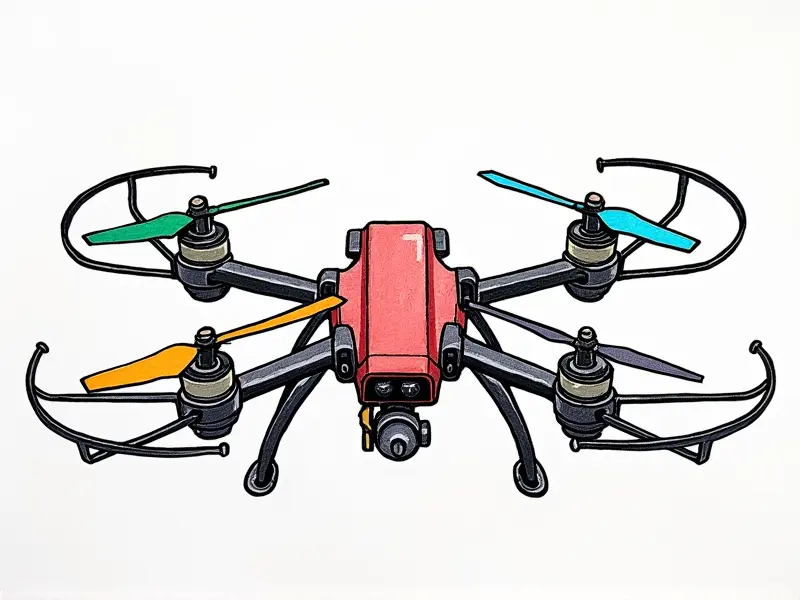Walkera nano drone manual?

Beginner's Guide to Flying Nano Drones
Welcome to the exciting world of nano drones! The Walkera Nano drone is a compact, lightweight marvel that packs a punch in terms of features and performance. As a beginner, you might feel overwhelmed by all the technical details, but don't worry—this guide will walk you through everything you need to know to get started.
Before we dive into the specifics of flying your Walkera Nano drone, it's essential to understand some basic concepts:
Understanding Drone Terminology
- Yaw: The rotation around the vertical axis (left and right).
- Pitch: The tilt forward or backward.
- Roll: The side-to-side movement.
Familiarizing Yourself with Controls
The Walkera Nano drone comes equipped with a remote control that uses intuitive controls to maneuver the drone. Spend some time getting comfortable with these controls before taking off for your first flight.
Quick Start Guide: Walkera Nano Drone
Getting started with your new Walkera Nano drone is easy and straightforward. Follow these steps:
Unboxing Your Drone
- Remove all packaging materials carefully.
- Inspect the components to ensure everything is present: drone, remote control, battery packs, charger, propellers, and any additional accessories.
Battery Installation
The Walkera Nano uses rechargeable lithium polymer (LiPo) batteries. Follow these steps:
- Charge the battery using the provided charger until it reaches full capacity.
- Insert the charged battery into the drone's compartment, ensuring it is securely locked in place.
Connecting to Remote Control
The remote control and drone must be paired before you can start flying:
- Turn on the remote control and press the pairing button (usually located near the battery compartment).
- Press the power button on the drone to turn it on. The LED lights should blink, indicating that it is searching for a connection.
- The drone will connect automatically once paired with the remote control.
Essential Features of Walkera Nano
The Walkera Nano drone boasts several features that make it stand out in its class:
Compact and Lightweight Design
Weighing less than 50 grams, the Walkera Nano is incredibly portable. You can easily carry it around without worrying about bulk.
High-Definition Camera
The built-in camera captures stunning images and videos in high definition, allowing you to document your adventures from a unique perspective.
Built-In LED Lights
The drone features bright LED lights that enhance visibility during low-light conditions or at night.
Walkera Nano Drone Controls Explained
To master flying the Walkera Nano, you need to understand how each control on the remote operates:
Main Control Stick
- Up/Down: Adjusts altitude.
- Left/Right: Controls yaw (rotation).
Auxiliary Control Stick
- Forward/Backward: Controls pitch (tilt forward/backward).
- Left/Right: Controls roll (side-to-side movement).
Maximizing Flight Time with Nano
The flight time of the Walkera Nano depends on several factors, including battery capacity and environmental conditions. Here are some tips to extend your drone's flight duration:
Battery Management
- Always use fully charged batteries.
- Avoid over-discharging the battery; land when it reaches 20-30% charge remaining.
Optimal Flight Conditions
- Fly in calm weather conditions to reduce wind resistance.
- Avoid flying in direct sunlight, as high temperatures can affect battery performance.
Troubleshooting Common Issues Nano
No matter how well you maintain your drone, issues may arise. Here are some common problems and their solutions:
Drone Won't Connect to Remote Control
- Ensure both the remote control and drone are turned on.
- Press the pairing button on the remote control and wait for the LED lights on the drone to blink.
Battery Not Charging Properly
- Check if the battery is properly inserted into the charger.
- Ensure the charger is plugged in correctly and functioning.
Safety Tips for Nano Drone Pilots
Flying a nano drone safely requires awareness of your surroundings and adherence to basic safety guidelines:
Avoid Obstacles
- Keep the drone away from trees, buildings, and other obstacles.
- Be mindful of power lines and electrical cables.
Fly Within Legal Boundaries
- Check local regulations regarding drone usage in your area.
- Avoid flying near airports or restricted airspace.
Advanced Tricks with the Walkera Nano Drone
Once you've mastered basic flight, it's time to explore advanced maneuvers:
Circle Flight
- Hold down the yaw control while moving the main stick in a circular motion.
Flip Maneuvers
- Perform quick, sharp movements on the auxiliary stick to execute flips.
Optimal Settings for Walkera Nano Drone
Tuning your drone's settings can significantly enhance its performance:
Battery Voltage Setting
- Adjust the voltage setting based on battery capacity and desired flight time.
PID Tuning
- Calibrate PID values for optimal stability during flight.
Walkera Nano Drone Maintenance Checklist
Maintaining your Walkera Nano ensures it remains in top condition:
Battery Care
- Store batteries at room temperature when not in use.
- Avoid exposing batteries to extreme temperatures or direct sunlight.
Cleaning and Lubrication
- Regularly clean the drone's exterior with a soft cloth.
- Lubricate moving parts as recommended by the manufacturer.
Advanced Features of Walkera Nano Drone
The Walkera Nano offers several advanced features for experienced pilots:
GPS Tracking
- Enable GPS tracking to monitor drone location and return home automatically.
Return-to-Home Functionality
- Configure the return-to-home altitude and distance settings for optimal performance.
By following these guidelines, you can enjoy a safe and enjoyable flying experience with your Walkera Nano drone. Happy flying!

